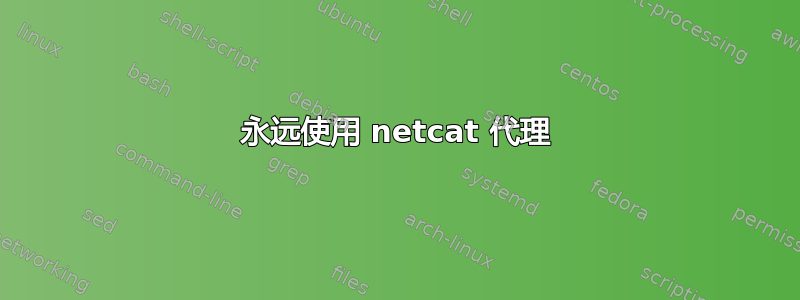
我正在使用 netcat 代理 VNC TCP 服务器端口。代理机器运行 Linux。
这是我使用的命令:
mkfifo backpipe
nc -l 5902 0<backpipe | nc 10.1.1.116 5902 1>backpipe
10.1.1.116 是“远程”机器,原始 VNC 服务在端口 5902 上运行。此命令之后,其他机器可以在本地主机上使用 VNC 服务。
但是在每次 VNC 会话之后,netcat“代理服务器”都会停止,这就是 netcat 的工作方式。
如何让 netcat 在 VNC 会话终止后继续运行“代理服务”?
作为一种解决方法,我将 netcat 命令行置于无限循环中:
mkfifo backpipe
while true; do nc -l 5902 0<backpipe | nc 10.1.1.116 5902 1>backpipe; done
但我更喜欢“官方”的 netcat 解决方案,它根本不会中断服务。
我已经阅读了有关“-”参数的信息,但我不确定这是否适合这种情况,而且我还不能正确应用它。
补充说明:
当然,我可以用不同的方式使用 ssh 隧道来实现这一点,但我想要一个没有加密开销的解决方案,以便让 VNC 客户端尽可能地响应。否则,使用不同的代理解决方案也可以。
客户端必须是 VNC,其他协议均不行。
答案1
该-k选项应该可以解决问题。
来自的手册页nc(1):
-k Forces nc to stay listening for another connection after its
current connection is completed. It is an error to use this
option without the -l option.
我注意到netcat-traditionalDebian/Ubuntu 上的软件包没有像它应该的那样继续监听。在这种情况下,请使用该netcat-openbsd软件包并重试!
或者,使用socat,它更适合您的代理服务器用例。 来自手册页的随机 TCP 转发器示例socat当然需要进行一些修改。
socat -d -d -lmlocal2 \
TCP4-LISTEN:80,bind=myaddr1,reuseaddr,fork,su=nobody,range=10.0.0.0/8 \
TCP4:www.domain.org:80,bind=myaddr2
TCP port forwarder, each side bound to another local IP
address (bind). This example handles an almost arbitrary
number of parallel or consecutive connections by fork'ing a
new process after each accept() . It provides a little secu‐
rity by su'ing to user nobody after forking; it only permits
connections from the private 10 network (range); due to
reuseaddr, it allows immediate restart after master
process's termination, even if some child sockets are not
completely shut down. With -lmlocal2, socat logs to stderr
until successfully reaching the accept loop. Further logging
is directed to syslog with facility local2.


